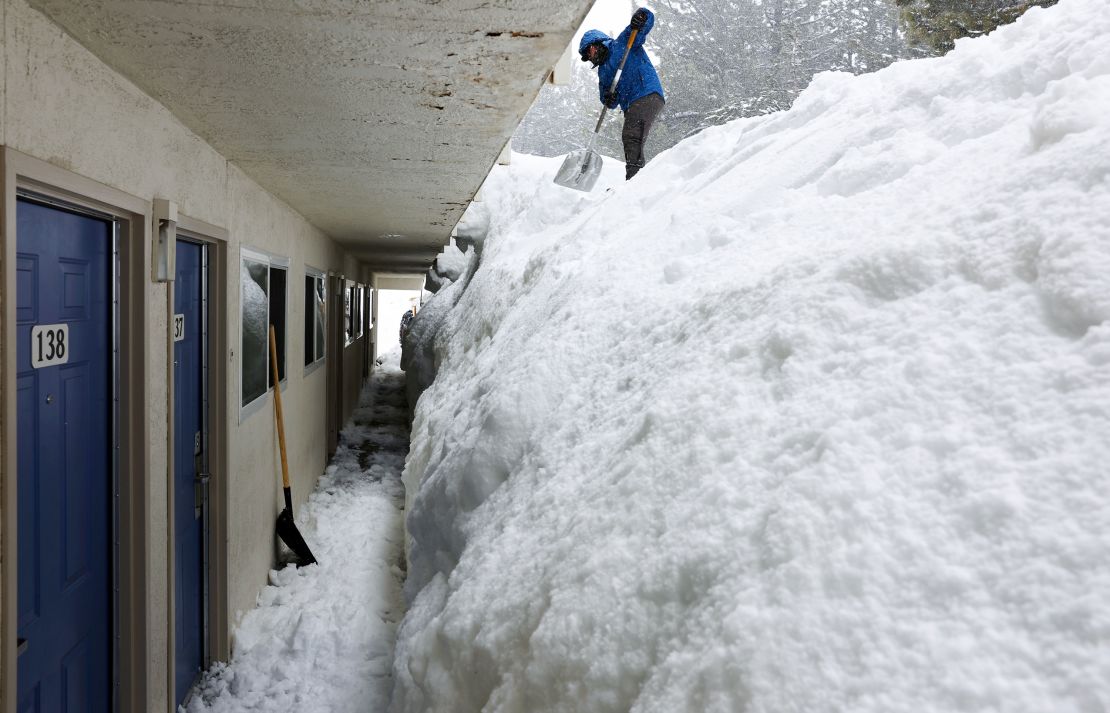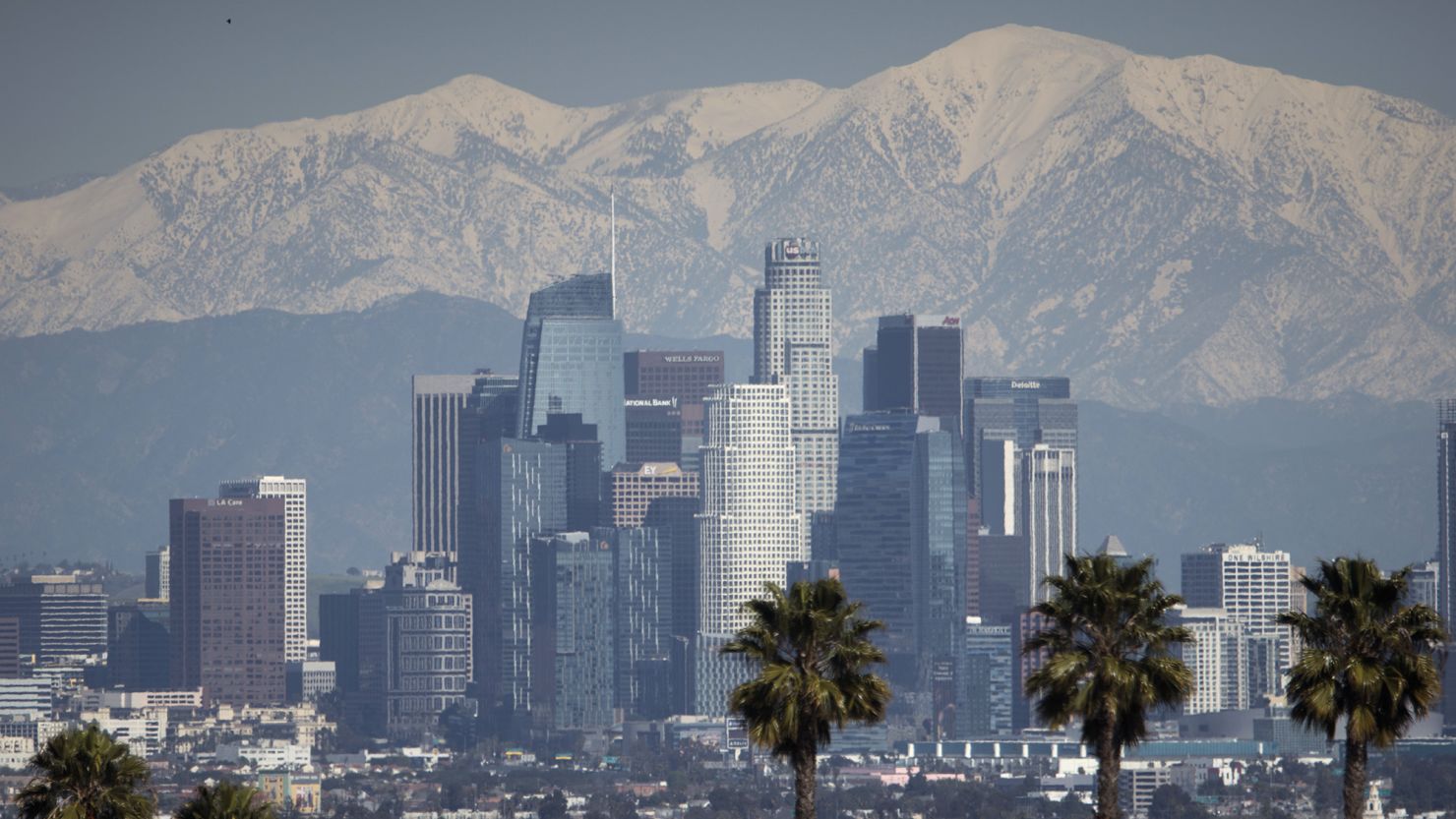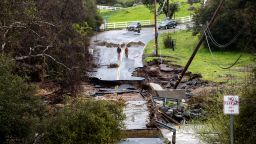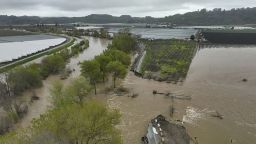The Metropolitan Water District of Southern California is no longer mandating emergency restrictions on water use for over 7 million people after winter storms boosted water supplies, the district said in a news release.
The restriction had been put in place in June 2022 and allowed residents only one day per week of outdoor watering for portions of Los Angeles, Ventura and San Bernardino counties. The summer prior, California saw the most severe drought in its 126-year record-keeping history, and the state’s reservoirs hit critically low levels.
But recent storms have allowed the water district to pull back on those restrictions.
California has been hit this winter by 11 separate “atmospheric rivers,” the term for long, narrow bands of moisture that can carry saturated air thousands of miles like a fire hose. One such system earlier this week shattered daily rainfall records in Los Angeles, Santa Barbara and Santa Maria and caused flooding and mudslides in the state.
Two atmospheric river events struck California last week and led to “broad reductions in drought coverage and intensity,” according to the latest US Drought Monitor released on Thursday morning.
The water district’s Board of Directors decided to remove the restrictions in a meeting Tuesday due to “improvements in the availability of State Water Project supplies,” the release said.
Still, the organization noted that storage reserves “have been drawn down” and that the region’s other water source, the Colorado River, still faces significant challenges.
“Southern California remains in a water supply deficit,” said Tracy Quinn, a water district board member and the chair of the district’s One Water and Stewardship Committee. “The more efficiently we all use water today, the more we can keep in storage for a future dry year. And as we face climate whiplash, dry conditions could return as soon as next year.”
The water district asked residents to continue using “water as efficiently as possible” to refill storage and help prepare for any resource cuts from the Colorado River.
When the district announced its restrictions last year, community advocates criticized the decision as misplaced, noting that the biggest water users are not families watering their lawns but agriculture and fracking.
Amanda Starbuck, research director with the non-profit environmental group Food & Water Watch, told CNN at the time cutting back on residential water use is like telling people recycling could save the planet. While it’s a meaningful action, she said, it’s not going to make a dent in the crisis at large.
“It’s also kind of a little bit demeaning to blame residential use for these crises,” Starbuck said. “It’s just a small sliver of the overall consumption. It’s a much bigger problem, and we really need to start bringing in these big industries that are guzzling water during this time of drought.”
Drought eases after deluge of storms

Only a year ago, the entire state was 100% in a drought due to a dire lack of precipitation and higher evaporation rates from increasingly warmer temperatures. But after an incredible series of winter storms, California state’s snowpack is the largest it has been in decades.
Snowpack in the California Sierra is 177% of normal for this time of year, officials at the Department of Water Resources reported after taking their monthly measurements early this month. Statewide, snowpack is averaging 190% compared to normal for the date — a significant boost after back-to-back storms.
Snowpack in the Sierra Nevada is critical because it acts as a natural reservoir and accounts for 30% of California’s freshwater supply in an average year. The recent record-breaking, three-week deluge helped replenish drought-stricken parts of the state, particularly in Southern California.
Further, severe drought in California was cut in half from the previous week, now covering only 8% of the state, according to the drought monitor. Just over a third of the state remains in some level of drought, the lowest amount in nearly three years.
Torrential rain, along with melting of lower-elevation snowpack and dam releases, led to significant water rises along many waterways in California’s Central Valley last week.
California’s reservoirs have benefited from the wet pattern in recent months with the drought monitor noting “storage at the end of February was 96% of the historical average for this time of year.”
The drought monitor indicated that more relief could appear in next week’s update. “Precipitation spread across southern California after the drought-monitoring period ended and will be reflected on next week’s assessment,” the monitor said.
Still, the state faces an acute groundwater shortage, which many of California’s rural communities rely on. Experts have previously told CNN it will ultimately take many wet winters for California and the rest of the West to recover from what scientists have said is a long-term drying trend.
CNN’s Monica Garrett contributed to this report.







